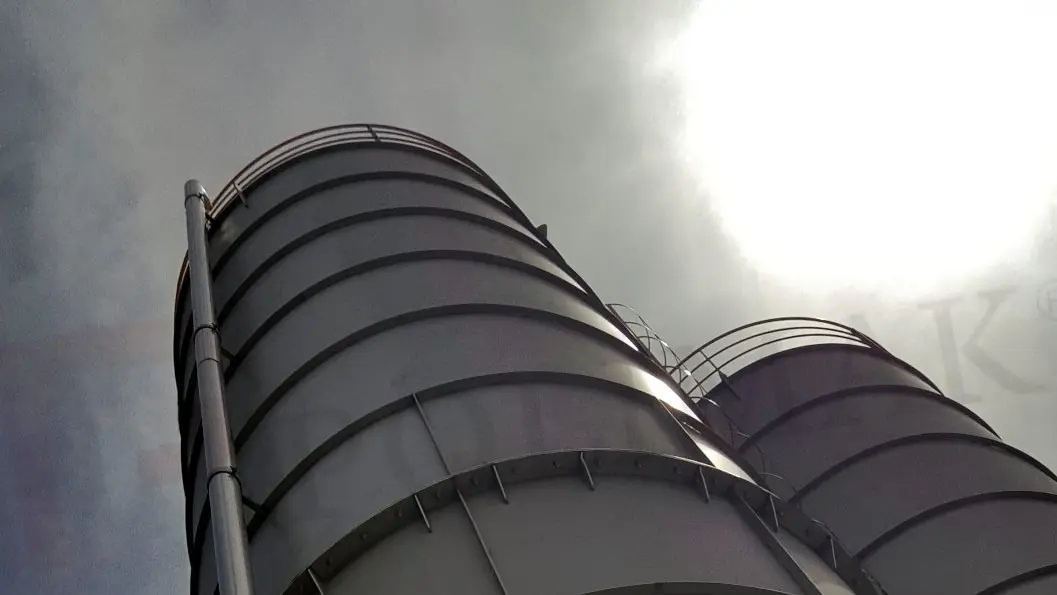Container Loading Systems
Container loading systems are critical in port and terminal operations. They enable the efficient, safe, and rapid loading of bulk solids into standard shipping containers. These systems ensure seamless integration between port storage areas and outgoing transportation, including sea, rail, and road.
This process is crucial to intermodal logistics, enabling smooth transfer of goods across different transport modes such as ship, train, and truck. For bulk materials like grains, fertilizers, or minerals, automated container loading reduces handling steps and contamination risk.

How the System Operates
• Material Preparation:
Bulk materials are first stockpiled or stored in silos or warehouses near the container yard. Depending on the product, pre-treatment processes such as screening or drying may be applied.
• Conveying to Loading Station:
Conveyor systems (belt, screw, or pneumatic) transfer bulk materials from storage to a container loading station. For palletized or packaged goods, forklifts or automated guided vehicles (AGVs) are used.
• Container Positioning:
The container is positioned correctly for loading. This can be either on a trailer chassis or in a docked position. Systems may include tilting or rotating mechanisms to optimize material distribution.
• Controlled Loading:
The bulk material is loaded into the container using telescopic chutes, or loading arms. For bulk materials, loading is monitored by volume sensors or weight systems to avoid overfilling or imbalance.
• Dust & Safety Management:
Especially for dusty or hazardous materials, the loading zone is equipped with dust collection systems (e.g., filters, foggers) and sealing sleeves that prevent spillage and environmental contamination.

Key Components
• Container Loading Conveyor System: A high-capacity conveyor tailored for efficient container fill, often adjustable in length and height.
• Loading Chute: Enables controlled and dust-free filling of bulk solids into the container to prevent overflow or material segregation.
• Container Weighing System: Inline weighing or load cell systems ensure each container meets regulatory and transport weight limits.
• Dust Collection Units: Includes bag filters, or cyclone separators to reduce dust particle emissions during the loading process.
• Safety Barriers and Controls: Includes automated gate systems, emergency stops, and operator control panels for real-time monitoring.

Key Advantages and Benefits
• Intermodal Efficiency: Optimized for seamless transfer between ship, train, and truck transportation, as well as minimizing re-handling and downtime.
• Time-Saving Operations: Automated systems significantly reduce container loading times, improving terminal efficiency.
• Reduced Material Loss: Closed systems and precision loading prevent material waste and ensure full container utilization.
• Compliance with Environmental Standards: Advanced dust and noise control features help ports comply with environmental and worker safety regulations.
• Adaptability to Material Types: From fine powders to coarse granules and palletized goods, systems can be customized to specific cargo requirements.

Industry-Specific Examples
• Mining & Minerals Sector: Mining products such as copper concentrate or bauxite are loaded directly from covered stockpiles into containers using screw conveyors with sealed loading chutes. This closed system helps maintain product integrity by reducing dust emissions. It also protects the material from moisture exposure during loading.
• Agri-Bulk Handling: Grain terminals use telescopic conveyor systems to load bulk solids such as soybeans or corn into containers efficiently. These systems are often integrated with fumigation or moisture monitoring to meet strict export quality standards. As a result, the grain remains safe and compliant throughout the loading process.
• Chemical Ports: Powdered or granulated chemicals are containerized in containers using enclosed pneumatic loading systems. This method ensures safe handling by eliminating dust release and direct contact. It also prevents contamination and maintains chemical purity during transport.
• Cement & Construction Products: Cement, fly ash, or blended materials are loaded using heavy-duty conveyors equipped with vibration-assisted chutes. These features prevent material bridging and ensure even distribution inside the container. The containers are then sealed and prepared for efficient delivery to construction sites.